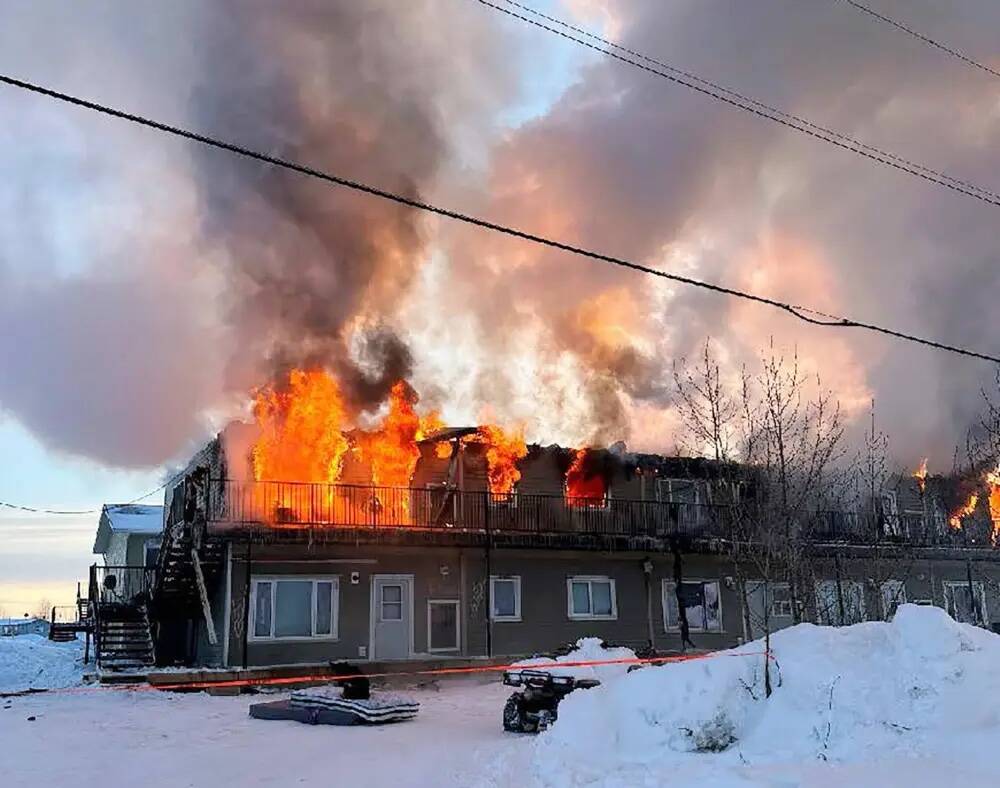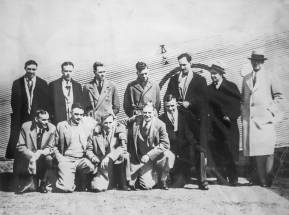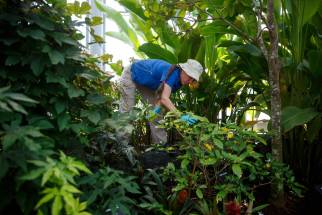Paltry funding for First Nation firefighting risks lives
Read this article for free:
or
Already have an account? Log in here »
To continue reading, please subscribe:
Monthly Digital Subscription
$0 for the first 4 weeks*
- Enjoy unlimited reading on winnipegfreepress.com
- Read the E-Edition, our digital replica newspaper
- Access News Break, our award-winning app
- Play interactive puzzles
*No charge for 4 weeks then price increases to the regular rate of $19.00 plus GST every four weeks. Offer available to new and qualified returning subscribers only. Cancel any time.
Monthly Digital Subscription
$4.75/week*
- Enjoy unlimited reading on winnipegfreepress.com
- Read the E-Edition, our digital replica newspaper
- Access News Break, our award-winning app
- Play interactive puzzles
*Billed as $19 plus GST every four weeks. Cancel any time.
To continue reading, please subscribe:
Add Free Press access to your Brandon Sun subscription for only an additional
$1 for the first 4 weeks*
*Your next subscription payment will increase by $1.00 and you will be charged $16.99 plus GST for four weeks. After four weeks, your payment will increase to $23.99 plus GST every four weeks.
Read unlimited articles for free today:
or
Already have an account? Log in here »
Hey there, time traveller!
This article was published 14/04/2023 (970 days ago), so information in it may no longer be current.
What’s the price of safety? Or the going rate for peace of mind?
For First Nations in Manitoba, Indigenous Services Canada has pegged the figure at a paltry $3.4 million.
The annual firefighting budget for all 63 First Nations in this province was obtained by the Free Press following a string of deadly and damaging house fires on local reserves.
In March, an 11-year-old boy was killed in a residential fire on Sioux Valley Dakota Nation. Earlier this month, a 49-year-old man and a 25-year-old woman died in separate house fires on Bloodvein First Nation and Tataskweyak Cree Nation, respectively.
The latter community, located 900 kilometres north of Winnipeg, was recovering from a blaze in February that destroyed an apartment building, sent children to hospital and displaced 10 families. A similar situation unfolded in Shamattawa last month, when an elder’s complex went up in flames.
While the causes of these fires remain under investigation, their tragic outcomes could have been avoided if proper fire protection services were available.
Shamattawa’s lone fire truck was in Winnipeg for repairs at the time and Bloodvein’s engine was out of commission, forcing volunteer firefighters to fight the blaze with a water delivery truck. Likewise, Tataskweyak had to rely on help from Gillam, a town located more than 100 kilometres away.
This is a state of emergency caused and exacerbated by chronic underfunding of on-reserve services at the federal level. That $3.4 million — distributed amongst 63 communities — has been deemed an appropriate budget for life saving services is, frankly, appalling.
Fire engulfed an apartment complex in Tataskweyak Cree Nation last week. (RCMP)
While a community-by-community breakdown isn’t publicly available, Indigenous Services allocates funds based on the number of buildings on a reserve, its remoteness and population. If that total were split evenly between Manitoba First Nations it would leave each community with roughly $54,000 for all its firefighting needs, including equipment maintenance, emergency operations and training.
At that rate, Tataskweyak would be hard pressed to purchase a new fire truck — something Chief Taralee Beardy says the community of 2,353 people desperately needs. For the purposes of comparison, the similarly-sized town of Ste. Anne in southeastern Manitoba spent more than $260,000 on fire protection services in 2021.
Ottawa’s underfunding of emergency services on reserves is akin to pouring gas on a tinderbox of its own making.
Living conditions on many local reserves are substandard due to a lack of federal support. According to the most recent census, 29 per cent of Manitoba First Nation residents live in a home in need of major repairs, while 36 per cent reside in an overcrowded dwelling — unacceptable statistics that are the highest of any province in Canada.
Ottawa’s underfunding of emergency services on reserves is akin to pouring gas on a tinderbox of its own making.
Poor housing stock is a safety issue. So is a lack of social services, health facilities and employment opportunities. In a Free Press interview, Bloodvein Chief Roland Hamilton pointed to a widespread crisis of meth addiction within his community as a possible factor in the recent fires.
Following the recent tragedies, Hamilton and other leaders of Manitoba First Nations have come together to demand better from the agency holding the purse strings.
If the federal government is unable to provide Manitoba First Nations with adequate resources to address crumbling infrastructure and ongoing social issues — which can be categorized as lasting impacts of colonialism — the least it can offer is better access to emergency services.
Let’s hope Ottawa is listening. The human cost of the status quo is too great.












